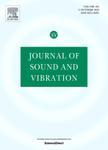版权所有:内蒙古大学图书馆 技术提供:维普资讯• 智图
内蒙古自治区呼和浩特市赛罕区大学西街235号 邮编: 010021

作者机构:von Karman Inst Chaussee Waterloo 72 B-1640 Rhode St Genese Belgium Univ Melbourne Parkville Vic 3010 Australia
出 版 物:《JOURNAL OF SOUND AND VIBRATION》 (声音与振动杂志)
年 卷 期:2021年第506卷
页 面:116162-116162页
核心收录:
学科分类:07[理学] 082403[工学-水声工程] 08[工学] 070206[理学-声学] 0802[工学-机械工程] 0824[工学-船舶与海洋工程] 0801[工学-力学(可授工学、理学学位)] 0702[理学-物理学]
基 金:French global automotive Valeo
主 题:Gene Expression Programming Machine learning Turbulent boundary layer Wall pressure spectral models
摘 要:This paper presents a new data-driven approach for the establishment of empirical models describing turbulent boundary layer wall-pressure spectra. Unlike other models presented in literature, the new models are not derived by extending previously existing ones, but are directly built from a given dataset through symbolic regression using a machine learning algorithm known as Gene Expression Programming. Two modifications of the GEP algorithm presented in literature are proposed in this work to cope with some issues that are specific to the modelling of wall pressure spectra: a new power terminal and a local optimization loop. The validity of the new approach is first demonstrated using as input a dataset synthesized following the Chase-Howe and Goody models. The method is then applied to experimental data for a flat plate boundary layer. The results indicate that the wall pressure model obtained with the proposed approach remains consistent with previous formulations for zero pressure gradient, while showing a better match with the data and suggesting new ways to predict the influence of moderate pressure gradient (c) 2021 Elsevier Ltd. All rights reserved.